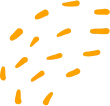Definition
The absolute complement of a set A refers to all the elements in the universal set U that are not in A. It represents what is "outside" set A relative to the universe being considered.
Absolute complement (or simply complement) of a set A, denoted as A',
Ac, or Ā,
is the set of all elements in the universal set U that are not in A. It represents everything
"outside"
the given set within the defined universe of discourse.
🎯 What does this mean?
Absolute complement is like the "opposite" or "everything else" in your universe of
consideration.
If you think of a set as representing "what you have," then its complement represents "what
you don't have"
within all possible options. It's the mathematical way to describe exclusion and negation in
set theory.
\[ A' \]
Absolute Complement - Set of all elements in U that are
not in A
\[ A^c \]
Alternative Notation - Another way to write complement of
A
\[ \overline{A} \]
Bar Notation - Complement using overbar symbol
\[ U \]
Universal Set - The complete set of all elements under
consideration
\[ A \]
Original Set - The set whose complement we are finding
\[ x \in U \]
Element in Universe - x belongs to the universal set
\[ x \notin A \]
Not in Set - x does not belong to set A
\[ \emptyset \]
Empty Set - Set containing no elements
\[ |A| \]
Cardinality - Number of elements in set A
\[ A \cap B \]
Intersection - Elements common to both A and B
\[ A \cup B \]
Union - Elements in either A or B or both
\[ A \subseteq B \]
Subset Relation - All elements of A are also in B
🎯 Essential Insight: Complement depends entirely on the universal set U!
The same set A can have different complements depending on what universe you choose. Always
identify U first! 🌍
🚀 Real-World Applications
💻 Computer Science & Programming
Database Queries & Logic
Programmers use complement operations in SQL NOT queries, boolean logic, and
filtering operations to find everything except specified conditions
📊 Market Research & Analytics
Customer Segmentation
Market researchers use complements to identify non-customers, analyze market gaps,
and understand demographic segments not captured by campaigns
🔬 Medical Diagnosis & Testing
Disease Analysis & Screening
Medical professionals use complement concepts to identify patients without certain
conditions, analyze control groups, and design screening protocols
🎯 Quality Control & Manufacturing
Defect Analysis & Process Control
Engineers use complement sets to identify non-defective products, analyze failure
patterns, and optimize manufacturing processes
The Magic: Programming: Include conditions → Exclude
everything else, Marketing: Target audience → Non-target analysis,
Medicine: Disease presence → Healthy population,
Manufacturing: Quality products → Defect identification
Before working with complements, always establish your universe of
discourse:
Key Insight: Complement is not just "opposite" - it's "everything else
in your chosen universe."
The same set can have completely different complements depending on what universal set
you define!
💡 Why this matters:
🔋 Real-World Power:
- Database Design: Define what "not" means in
different contexts and query scopes
- Market Analysis: Understand that
"non-customers" depends on your total addressable market definition
- Scientific Research: Control groups must be
defined within the scope of your study population
- Logic Systems: Negation operations depend on
the domain of discourse
🧠 Mathematical Insight:
- Complement operation is universe-dependent - same set, different universe =
different complement
- De Morgan's Laws connect complements with union/intersection operations
- Complement creates perfect partitions: A ∪ A' = U and A ∩ A' = ∅
🚀 Practice Strategy:
1
Always Define Universe First 🌍
- Before finding complement, clearly state what U is
- Check: Does your universe make sense for the problem context?
- Key Rule: "No universe, no complement - they're inseparable"
2
Use Venn Diagram Visualization 🎨
- Draw rectangle for universe U
- Draw circle for set A inside rectangle
- Shade everything outside A but inside U - that's A'
3
Master De Morgan's Laws 🔄
- Pattern: Union and intersection swap under complement
- (A ∪ B)' = A' ∩ B' - "complement flips the operation"
- Practice: Work with concrete examples until pattern is automatic
4
Apply Complement Properties 🔗
- Double complement: (A')' = A (complement of complement)
- Partition property: A ∪ A' = U (everything covered)
- Disjoint property: A ∩ A' = ∅ (no overlap)
When you realize that complement is about defining "everything else" within a specific
context,
set theory becomes a powerful tool for organizing, analyzing, and reasoning about any
collection of objects!
Memory Trick: "Complement = Complete the Universe" -
UNIVERSE: Define your total scope first,
EXCLUDE: Remove the given set, REMAINDER: What's left is the
complement
🔑 Key Properties of Absolute Complement
🔄
Involution Property
Double complement returns original: (A')' = A
Taking complement twice gets you back to start
🌍
Universe Partition
Set and complement cover everything: A ∪ A' = U
Every element in universe belongs to either A or A'
⚡
Disjoint Property
Set and complement have no overlap: A ∩ A' = ∅
No element can be in both a set and its complement
🔗
De Morgan's Duality
Union and intersection swap: (A ∪ B)' = A' ∩ B'
Complement operation flips logical connectives
Universal Insight: Complement is the mathematical embodiment of logical
negation -
it formalizes the concept of "not" and enables precise reasoning about exclusion and opposition!
🎯
Universe Dependence: Same set can have different complements in different
universes
Perfect Partition: A ∪ A' = U and A ∩ A' = ∅ always hold
De Morgan's Rule: Complement flips union to intersection and vice versa
Cardinality Formula: |A'| = |U| - |A| for finite sets



